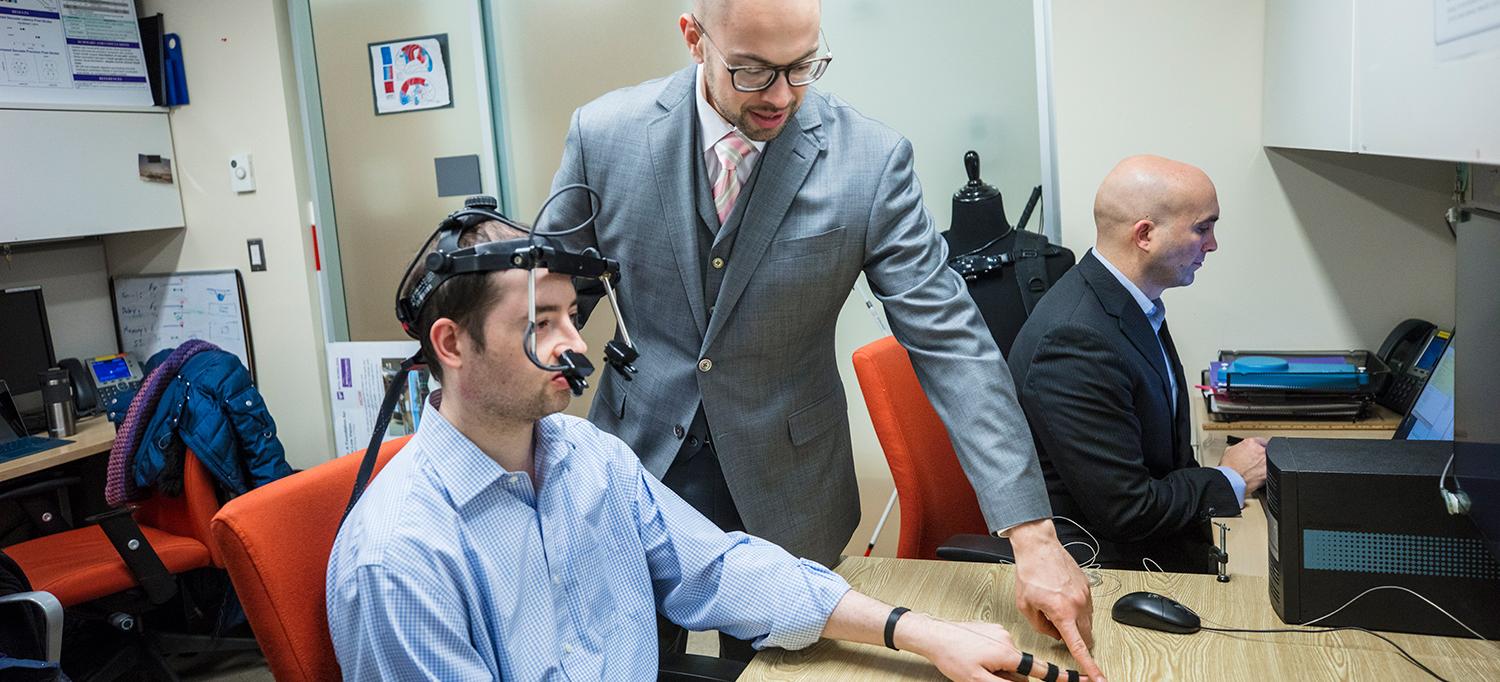
Dr. JohnRoss Rizzo’s lab is developing technology that helps people recovering from stroke overcome hand–eye coordination challenges.
Photo: NYU Langone Staff
Patients who are recovering from stroke appear to have impaired hand–eye coordination even beyond what is expected from underlying unidimensional sensorimotor deficits, such as hemiparesis.
The lab of JohnRoss Rizzo, MD, assistant professor of rehabilitation medicine and neurology, was instrumental in discovering the phenomenon while studying patients’ accuracy when they reach for objects.
He and his colleagues have sought to better understand the individual components of hand–eye control. “We want to know what they mean for a patient recovering from stroke in terms of neural processing and what demands they impose on an injured brain,” Dr. Rizzo says. “There is a primary problem where you mistime the two movements, and then there is the associated spatial challenge, that is, where you’re landing in the space both for the gaze and for the limb. We think that it all works together.”
To help patients recovering from stroke overcome this impairment, Dr. Rizzo’s lab is developing a type of biofeedback that provides them with visuospatial cues in real time. The technology, which resembles a video game, uses computer prompts as a patient looks at an object across a table and reaches for it.
Precise measurements can detect when a person’s visual system is off target, meaning his or her gaze is not aligned with the center of the target, and biofeedback of eye movement errors can report on the extent of the inaccuracy on a trial-to-trial basis.
“What if we actually gave you eye movement error feedback and it could serve as a spatial guidance system for error correction, cueing you to pay attention to your eye movements?” Dr. Rizzo asks.
To find out, his team tested its feedback system on a dozen patients recovering from stroke. “It not only improves spatial errors in their reaching limb, but also actually improves that hand–eye coordination impairment,” Dr. Rizzo explains. “So, it actually helps you re-synchronize those two movements.”
The improvement, Dr. Rizzo adds, starts to approach the way healthy participants perform the task. The research, presented at an international eye movement conference in Italy 2018, is scheduled to be published in the journal Progress in Brain Research.

